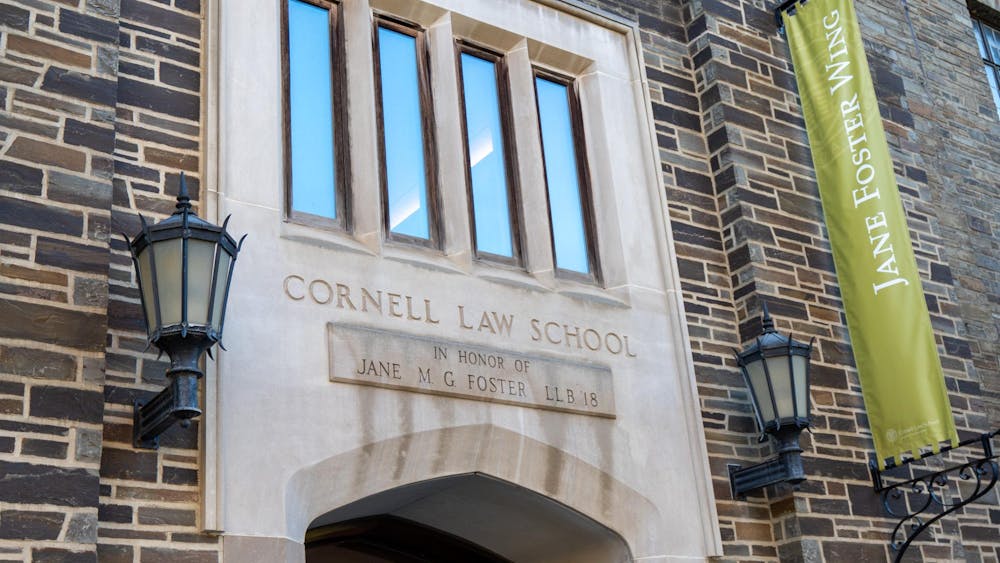New York’s hidden cornucopia can be found within walking distance of Cornell — 11 small farms spanning 325 acres, featuring hundreds of varieties of produce.
These farms include apples — New York's specialty — but also spicy peppers and the newest varieties of pumpkins, tomatoes, gourds, potatoes and more.
In the fall, certain harvests rise to the top of popularity lists for consumers and farmers alike.
“Right now, it’s the SnapDragon apple that was developed by Cornell, which is the most popular, followed by Honeycrisp,” said John Owens, the manager of Cornell Orchard.
Cornell Orchard grows 50 varieties of apples on eight acres off Dryden Road. The property spans 22 acres, with additional acreage dedicated to grapes, stone fruits and berries.
By early October, Cornell Orchard is in the middle of harvest for fresh and cider apple varieties, according to Owens. Cornell Orchard is one of 674 commercial orchards in New York, contributing to the state’s title as number two for apple production in the nation, according to the United States Apple Association.
Those who believe they are eating a fresh Cornell-grown apple on campus in late fall would be correct. Cornell Orchards supplies the apples not used in research to the dining halls. With excess, they sometimes sell to P&C Fresh, a local supermarket with locations in Ithaca and Cortland, explained Owens.
“It's been a good season so far,” Owens said. “We haven’t faced any early spring frost, which often prevents us from having full yields in the fall.”
Researchers at Cornell Orchards examine the economic and environmental viability of commercial tree fruit growers and hard cider production, as well as tree root biology and apple storage life.
While the fruit season unfolds, the vegetable sector is also at its peak. This part of New York’s cornucopia is not small — vegetables, melons and potatoes contribute $500 million to the state's economy.
Prof. Steve Reiners, horticulture, has spent his career helping produce successful fall vegetables crops in New York.
“This is a very productive season for vegetable growers,” Reiners said. “Pumpkins, gourds and a wide variety of squash are in peak season.”
There are several advantages to growing vegetables in cooler weather. Cooler temperatures, even after a frost, can enhance the flavors of carrots, beets and kale, which can taste sweeter in the cooler fall months, Reiners explained.
Many people are surprised to learn that New York is among the top 10 states for vegetable production in the country, according to Reiner. Reiner said that the local production “makes you consider the tenuous supply chains and the origins of our food.”
Fall harvests have been an annual event at the University since 1897, when George C. Caldwell established the New York State Agricultural Experiment Station using university farmland to support agricultural production in the state.
However, since then, rising temperatures and shifting Plant Hardiness Zones — an index developed by the U.S. Department of Agriculture to assess a plant's ability to thrive in a particular region — have changed the types of crops that can be grown in New York State, Reiners said.
“There are crops that we couldn't grow in the past that we will be able to grow in the next 20 years,” Reiners said. “At the same time, we continue to face invasive species, new diseases and new insects that we are always trying to stay one step ahead of.”
The need for production research on vegetables will never end, according to Reiners.
Cornell’s agricultural researchers conduct various year-round crop trials as part of its land-grant mission, which aims to advance the lives and livelihoods of New York citizens through federal funding.
In Cornell’s vegetable fields, plant breeders conduct a variety of trials on commercial crops while developing their own varieties.
Prof. Greg Vogel, integrative plant sciences, leads the lab investigating vegetable varieties for yield, quality and disease resistance. The Vogel Lab started in 2023, addressing the needs of tomato and eggplant growers, gardeners and consumers that the private sector may overlook in the Northeast.
Vogel works alongside several other crop breeders at Cornell’s Ithaca campus. The School for Integrated Plant Sciences has 166 faculty members in teaching and research appointments across New York State, many of whom are working to improve fruit and vegetable yields statewide.
The Agricultural Experiment Station staff supports the management of hundreds of acres of field, in addition to the hundreds of students who use the trials as a learning lab.
“Just two weeks ago, I had around 200 plant science students visit our tomato field. The research we conduct is also for instruction, for students to participate and learn. It's nice to have that close by,” Vogel said.
On an agricultural college’s campus, the fall harvest can take on a whole new meaning and scale.
Jake Zajkowski can be reached at jwz29@cornell.edu.










